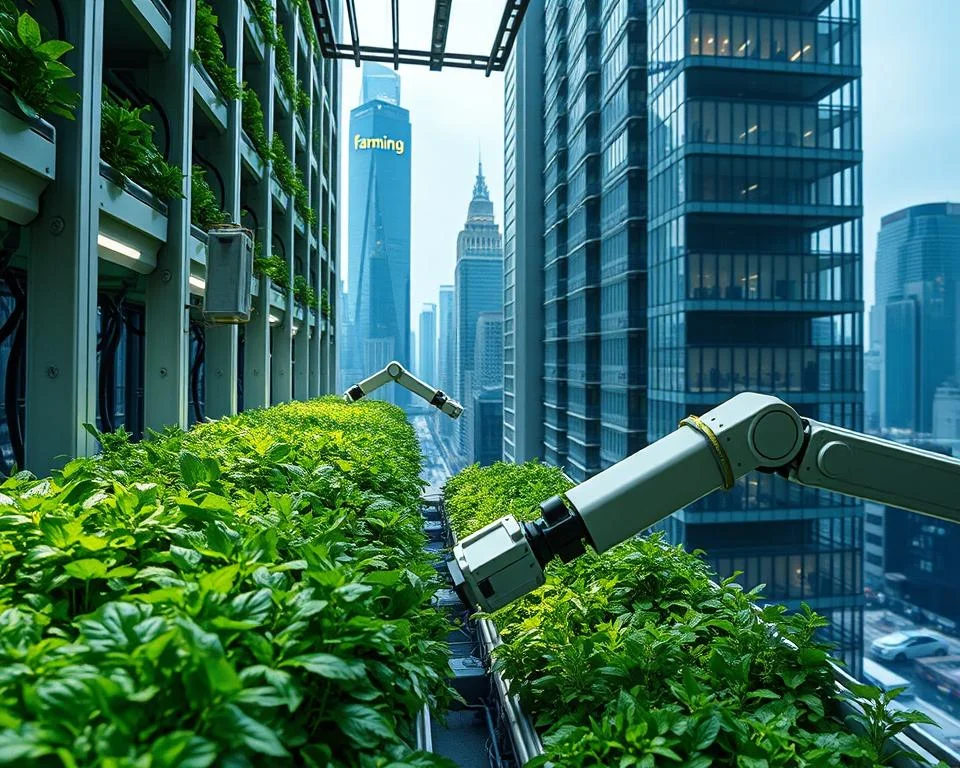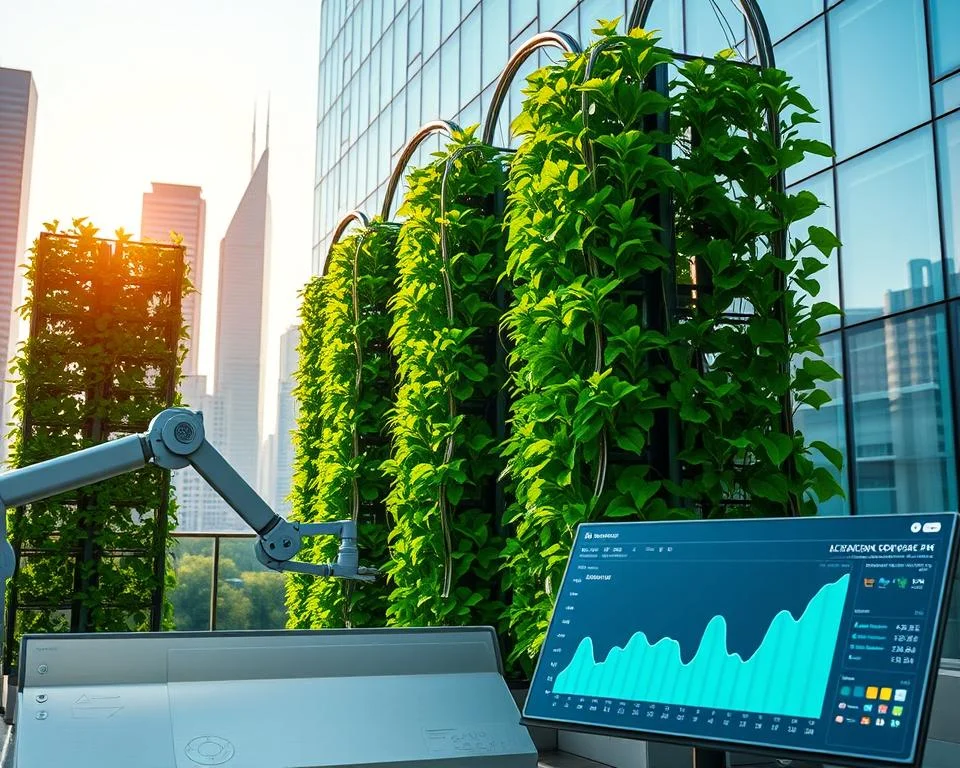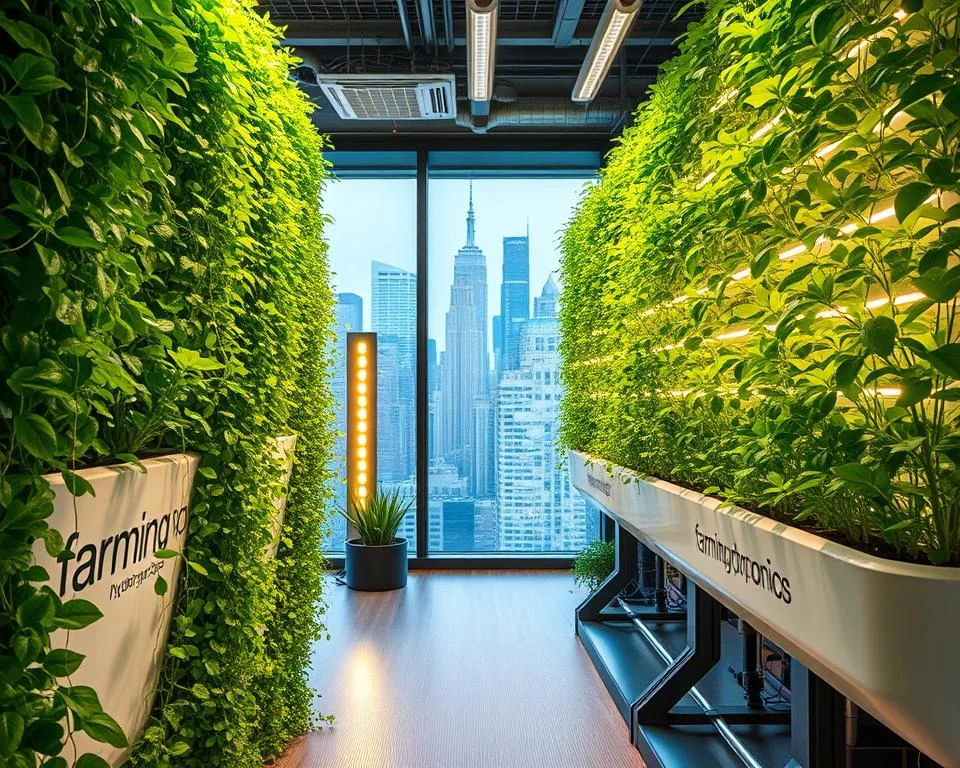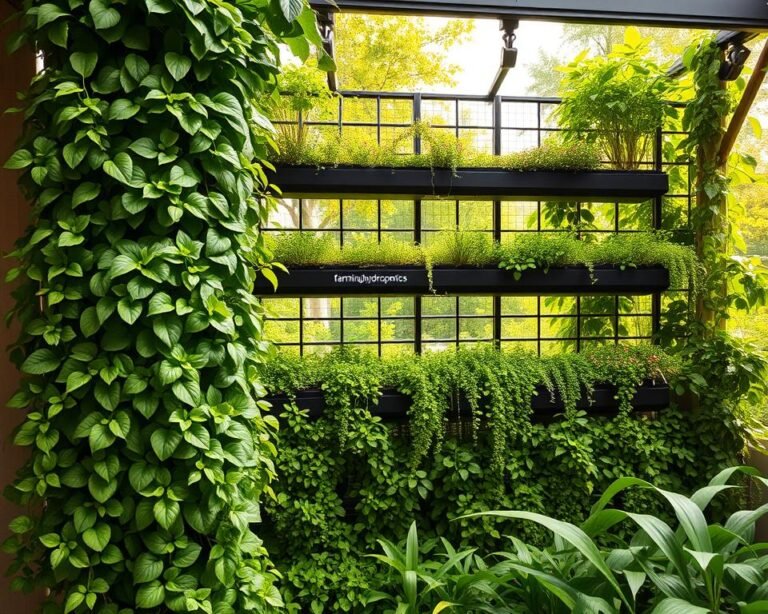Startup Innovations in Vertical Gardening
Imagine transforming concrete jungles into thriving green hubs. Thanks to startup innovations, vertical gardening is reshaping urban farming and making every square meter count.
These agile companies turn rooftops, warehouses, and even alleyways into productive farms, tackling global food challenges head-on. Cities such as New York and Singapore showcase how startup innovations enable fresh produce to flourish in the tightest spaces.
Vertical farming is far more than a passing trend—it’s a strategic answer to future food demand. With the world population projected to reach 9 billion by 2050—and food needs expected to rise by 70 percent—startup innovations are delivering systems that slash water use, minimize land requirements, and maximize yield, creating a sustainable path for urban agriculture.
Key Takeaways
- Vertical gardens reduce water usage by up to 70%
- Urban farming startups are transforming city landscapes
- Advanced technologies enable year-round crop production
- Innovative systems can produce 30 times more yield than conventional farms
- Vertical farming addresses food security in limited urban spaces
Understanding Modern Vertical Farming Systems
Vertical farming is a new technology ecosystem changing urban agriculture. It uses advanced methods to grow crops in small, controlled spaces. This challenges old farming ways.
Modern vertical farming offers great ways to grow food sustainably. You’ll learn about three key technologies changing farming:
- Hydroponic Growing Technologies
- Aeroponic Solutions
- Aquaponic Ecosystems
Hydroponic Growing Technologies
Hydroponics is a new way to grow plants without soil. It uses water rich in nutrients to help plants grow. Vertical hydroponic farms can produce up to 350 times more crops per square foot than traditional farming.
| Hydroponic Advantage | Performance Metric |
|---|---|
| Water Usage | 90% less water than traditional farming |
| Crop Yield | 350x more per square foot |
| Growing Cycle | Year-round production |
Aeroponic Solutions
Aeroponics was created by NASA. It uses mist to grow plants, saving water and speeding up growth. Startups are using it for efficient urban farming.
Aquaponic Ecosystems
Aquaponics links fish farming with plant growth, creating a closed-loop system. It shows how tech can make food production better by combining different systems.
“Vertical farming is not just about growing food; it’s about reimagining our relationship with agriculture in urban environments.” – Agricultural Innovation Expert
Startup Innovations in Urban Agriculture

Urban agriculture is changing fast thanks to new startup ideas. Companies like AeroFarms and Bowery are using new tech to rethink how we grow food in cities. They’re making big changes in how we farm.
The lean startup method is key for new farming ideas. Urban agriculture grants help these startups grow. They’re making farming smarter and more advanced.
- AeroFarms uses advanced aeroponics with data-driven precision
- Bowery implements AI-powered crop monitoring
- Sky Greens developed innovative hydraulic rotating farm systems
“Innovation is the key to sustainable urban agriculture,” says a leading agritech researcher.
Startups are making farming more efficient. Container farms can grow 30% more food. Vertical farming uses up to 90% less water. These changes show how new ideas can solve big farming problems.
The future of farming in cities looks bright. AI could make a big difference, scoring 9 out of 10. New tech like quantum and satellite data will keep changing farming, with over 85% of the industry on board.
Technology Integration and Smart Farming Solutions
Vertical farming is getting a tech boost that’s changing urban farming. Startups are using new tech to find their place in the market and get big investments. These new ways of farming are changing how we grow food in cities.

Advanced tech is making vertical farming more efficient than ever. AI and IoT are key for startups to improve crop growth and use resources better.
IoT and Sensor Technologies
Smart sensors are changing how we watch over crops with real-time data. These tools help track:
- Plant health indicators
- Nutrient levels
- Environmental conditions
- Water usage
Automation and AI Systems
AI is now a big part of vertical farming growth hacking. These systems can:
- Predict crop yields
- Optimize growing conditions
- Automate routine farming tasks
- Reduce human error
The AI in Agriculture Market is expected to grow from $1.7 billion in 2023 to $4.7 billion by 2028. This shows how big the potential of these technologies is.
Climate Control Solutions
Creating the perfect climate is key for vertical farming. Startups are working on systems that make ideal growing spots with less resources.
| Technology | Water Savings | Efficiency Increase |
|---|---|---|
| AI Climate Control | 57% | Up to 70% |
| Precision Irrigation | 25% | 40% |
| Automated Monitoring | 30% | 50% |
These tech advancements are not just boosting farm productivity. They’re also making farming more sustainable for the future. Venture capital is flowing to startups with new ideas for urban farming tech.
Sustainable Business Models for Vertical Gardens
Vertical farming is changing urban agriculture by solving big problems in food production. With more people and less land, vertical farming is a smart solution. It uses 98% less water and 99% less land than old farming ways.
Business strategies in vertical farming aim for efficiency and sustainability. Companies like Eden Green Technology show how tech can cut costs and energy use. Their greenhouses use 90% less light energy, making urban farming more economic.
Urban agriculture startups are focusing on a circular economy. They aim to use resources wisely and reduce waste. Vertical farms can grow over 200 types of produce with very little waste. By 2050, 80% of the world’s people will live in cities, making vertical farming key for food security.
Starting a vertical farming business can change urban food systems. It uses new technologies and green practices. This field offers a chance to make a big impact in agriculture and food production.







